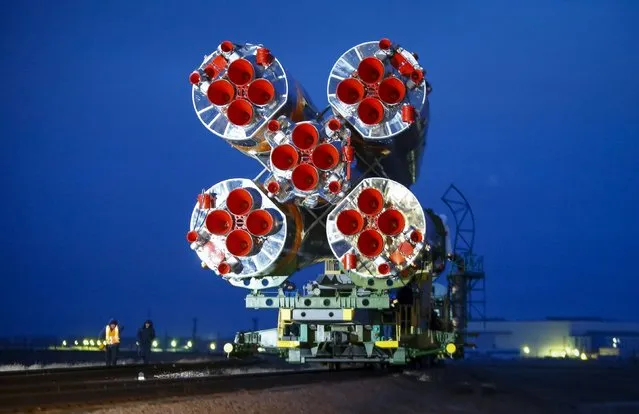
The Soyuz TMA-20M for the next International Space Station (ISS) crew is transported from an assembling hangar to the launchpad ahead of its launch scheduled on March 19, at the Baikonur cosmodrome in Kazakhstan March 16, 2016. A Russian Soyuz rocket has reached its last stop before liftoff Friday with two Russian cosmonauts and veteran NASA flight engineer Jeff Williams, who is slated to break the record for the most cumulative time spent in space by a U.S. astronaut. The kerosene-fueled rocket is set for launch at 21:26 GMT (5:26 p.m. EDT) Friday from historic launch pad No. 1 at the Baikonur Cosmodrome in Kazakhstan, the same starting point used on the first human spaceflight by Yuri Gagarin in 1961. Commander Alexey Ovchinin, a 44-year-old first-time space flier, will occupy the center seat of the Soyuz TMA-20M space capsule for Friday’s launch. Cosmonaut Oleg Skripochka, who logged 159 days in orbit on a space station expedition in 2010 and 2011, will sit in the left seat of the Soyuz spacecraft, serving as board engineer No. 1 and assisting Ovchinin during the flight. Williams, who will become commander of the International Space Station in June, will take the right seat of the Soyuz capsule for ascent. He is making his fourth trip into space, and his third long-duration mission to the space station. The trio will join three crew members already aboard the orbiting outpost 250 miles above Earth – NASA Expedition 47 commander Tim Kopra and flight engineers Tim Peake and Yuri Malenchenko from the European Space Agency and Russia, respectively. Ovchinin, Skripochka and Williams will restore the space station crew to six members after docking to the research lab’s Poisk module at 03:12 GMT Saturday (11:12 p.m. EDT Friday), less than six hours after liftoff. The Soyuz TMA-20M crew is scheduled to return to Earth around Sept. 7 after 172 days in orbit. (Photo by Shamil Zhumatov/Reuters)
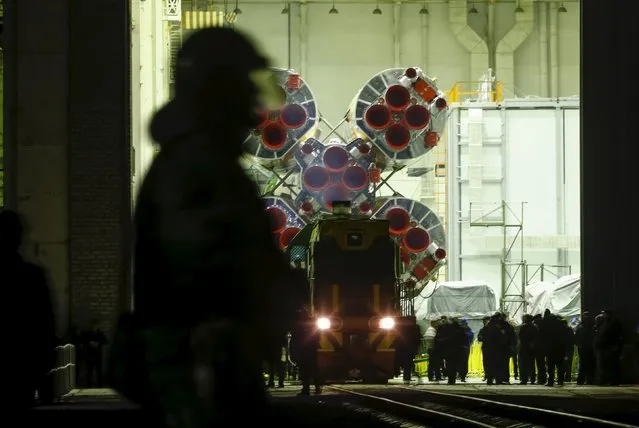
The Soyuz TMA-20M for the next International Space Station (ISS) crew of Jeff Williams of the U.S. and Oleg Skriprochka and Alexey Ovchinin of Russia as it is prepared for transportation from an assembling hangar to the launchpad ahead of its launch scheduled on March 19, at the Baikonur cosmodrome in Kazakhstan March 16, 2016. (Photo by Shamil Zhumatov/Reuters)
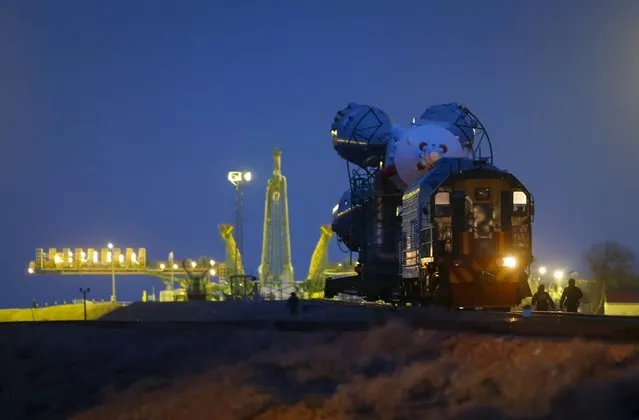
The Soyuz TMA-20M for the next International Space Station (ISS) crew of Jeff Williams of the U.S. and Oleg Skriprochka and Alexey Ovchinin of Russia is transported from an assembling hangar to the launchpad ahead of its launch, scheduled on March 19, at the Baikonur cosmodrome in Kazakhstan March 16, 2016. (Photo by Shamil Zhumatov/Reuters)
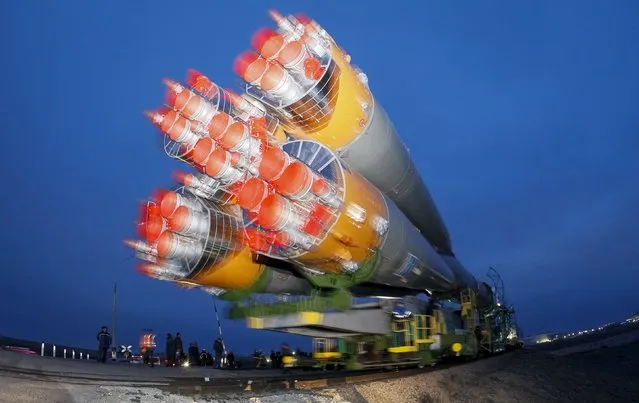
The Soyuz TMA-20M for the next International Space Station (ISS) crew of Jeff Williams of the U.S. and Oleg Skriprochka and Alexey Ovchinin of Russia is transported from an assembling hangar to the launchpad ahead of its launch scheduled on March 19, at the Baikonur cosmodrome in Kazakhstan March 16, 2016. (Photo by Shamil Zhumatov/Reuters)
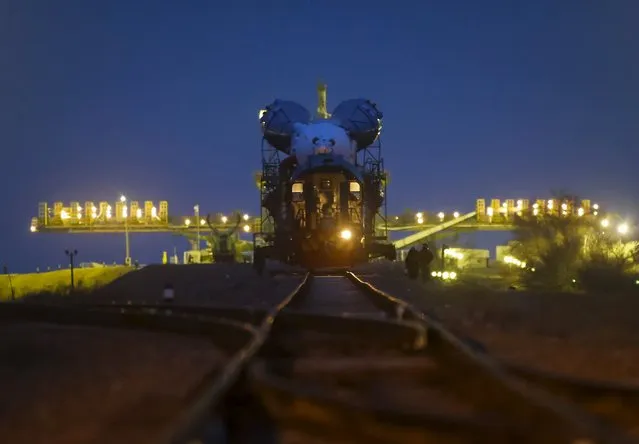
The Soyuz TMA-20M for the next International Space Station (ISS) crew of Jeff Williams of the U.S. and Oleg Skriprochka and Alexey Ovchinin of Russia is transported from an assembling hangar to the launchpad, ahead of its launch scheduled on March 19, at the Baikonur cosmodrome in Kazakhstan March 16, 2016. (Photo by Shamil Zhumatov/Reuters)
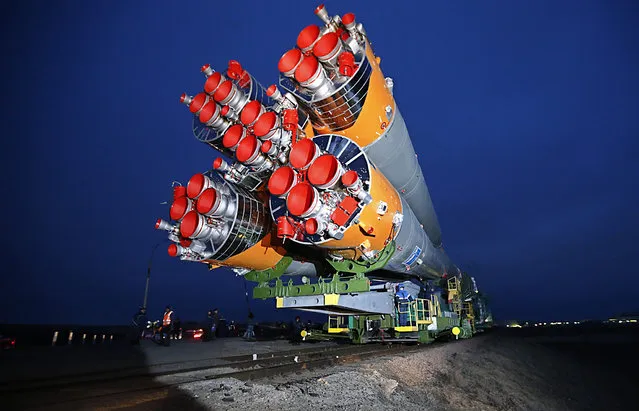
Russian Soyuz TMA-20M rocket booster is moved for installation at the launch pad at Baikonur cosmodrome in Kazakhstan, 16 March 2016. The crew is set to take off from Kazakhstan's Baikonur cosmodrome to the International Space Station (ISS) on 19 March 2016. (Photo by Yuri Kochetkov/EPA)
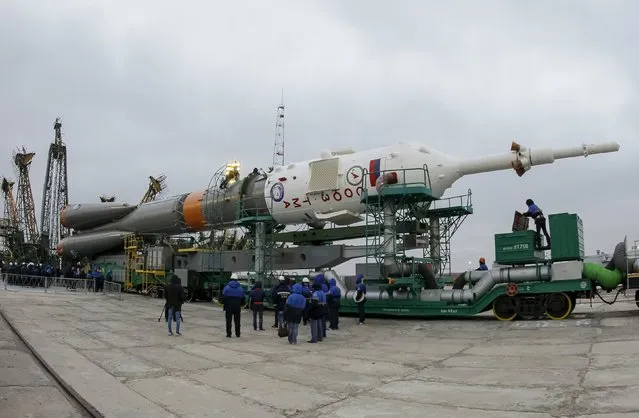
The Soyuz TMA-20M for the next International Space Station (ISS) crew of Jeff Williams of the U.S. and Oleg Skriprochka and Alexey Ovchinin of Russia is transported from an assembling hangar to the launchpad ahead of its launch, scheduled on March 19, at the Baikonur cosmodrome in Kazakhstan March 16, 2016. (Photo by Shamil Zhumatov/Reuters)
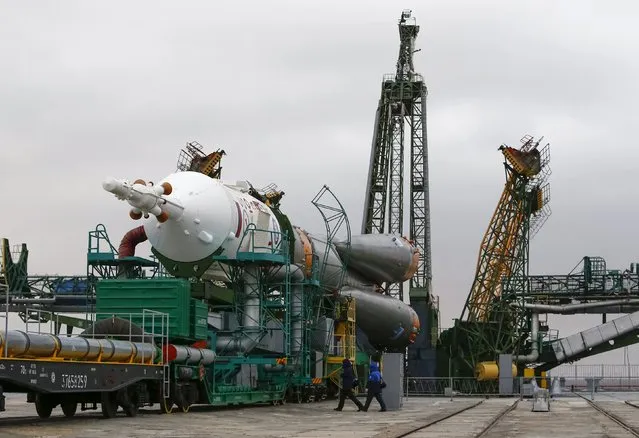
The Soyuz TMA-20M for the next International Space Station (ISS) crew of Jeff Williams of the U.S. and Oleg Skriprochka and Alexey Ovchinin of Russia is transported from an assembling hangar to the launchpad, ahead of its launch scheduled on March 19, at the Baikonur cosmodrome in Kazakhstan March 16, 2016. (Photo by Shamil Zhumatov/Reuters)
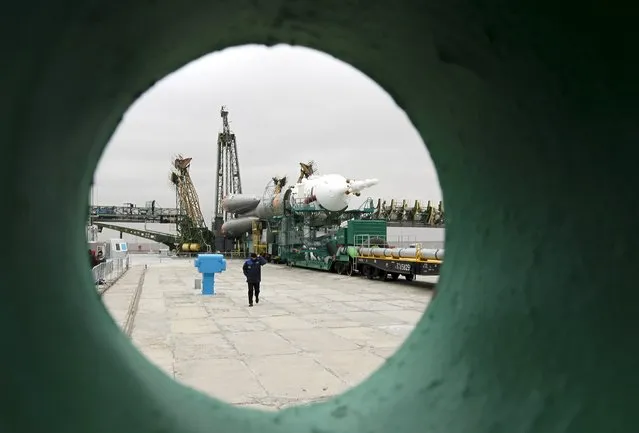
A specialist walks past the Soyuz TMA-20M for the next International Space Station (ISS) crew of Jeff Williams of the U.S. and Oleg Skriprochka and Alexey Ovchinin of Russia as it is transported to the launchpad ahead of its launch scheduled on March 19 at the Baikonur cosmodrome in Kazakhstan March 16, 2016. (Photo by Shamil Zhumatov/Reuters)
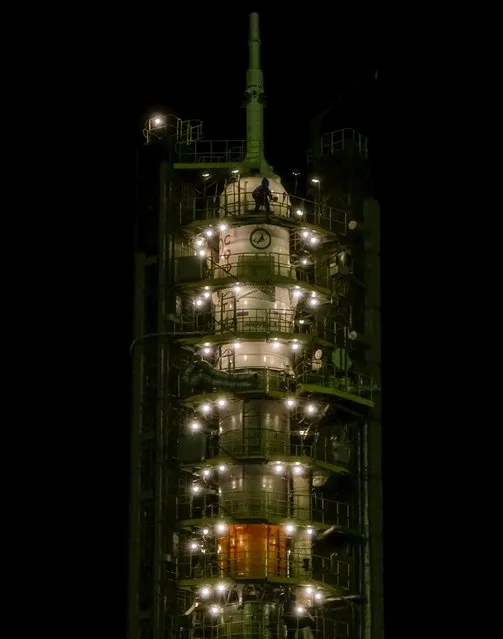
A specialist works on the Soyuz TMA-20M for the next International Space Station (ISS) crew of Jeff Williams of the U.S. and Oleg Skriprochka and Alexey Ovchinin of Russia after it is lifted at the launchpad ahead of its launch scheduled on March 19 at the Baikonur cosmodrome, Kazakhstan, March 16, 2016. (Photo by Shamil Zhumatov/Reuters)
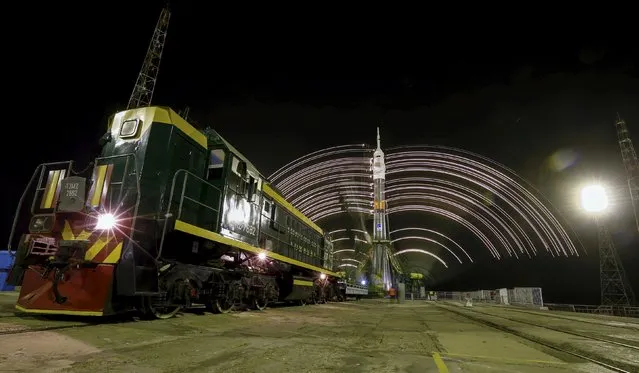
Service towers leave light trails as they move towards the Soyuz TMA-20M for the next International Space Station (ISS) crew of Jeff Williams of the U.S. and Oleg Skriprochka and Alexey Ovchinin of Russia at the launchpad ahead of its launch scheduled on March 19 at the Baikonur cosmodrome, Kazakhstan, March 16, 2016. (Photo by Shamil Zhumatov/Reuters)
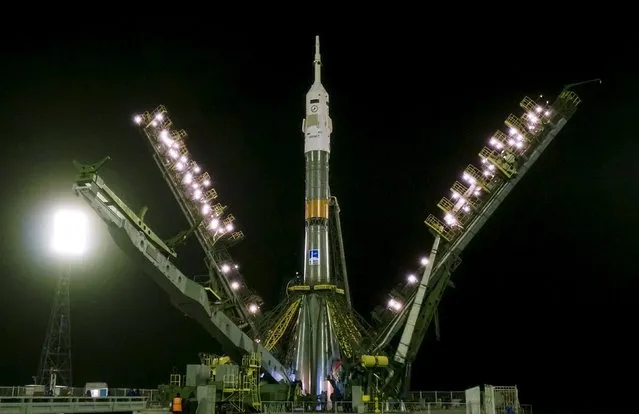
The Soyuz TMA-20M for the next International Space Station (ISS) crew of Jeff Williams of the U.S. and Oleg Skriprochka and Alexey Ovchinin of Russia is seen at the launchpad ahead of its launch scheduled on March 19 at the Baikonur cosmodrome, Kazakhstan, March 16, 2016. (Photo by Shamil Zhumatov/Reuters)
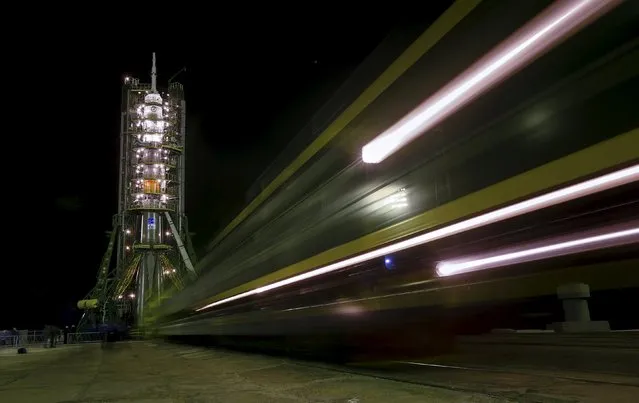
A train moves away from the Soyuz TMA-20M for the next International Space Station (ISS) crew of Jeff Williams of the U.S. and Oleg Skriprochka and Alexey Ovchinin of Russia at the launchpad ahead of its launch scheduled on March 19 at the Baikonur cosmodrome, Kazakhstan, March 16, 2016. (Photo by Shamil Zhumatov/Reuters)
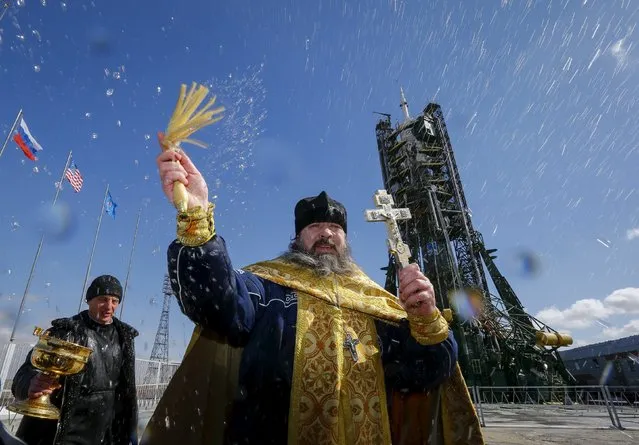
An Orthodox priest conducts a blessing in front of the Soyuz TMA-20M for the next International Space Station (ISS) crew, comprised of Jeff Williams of the U.S. and Oleg Skriprochka and Alexey Ovchinin of Russia, at the launchpad at the Baikonur cosmodrome, Kazakhstan, March 17, 2016, ahead of its launch scheduled on March 19. (Photo by Shamil Zhumatov/Reuters)
18 Mar 2016 12:13:00,
post received
0 comments
